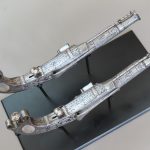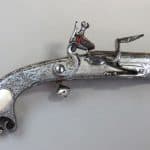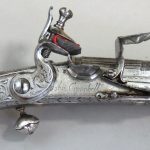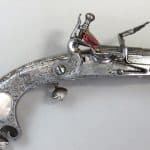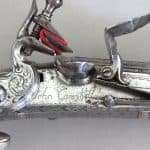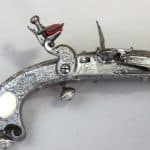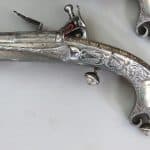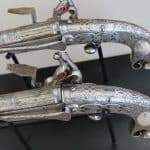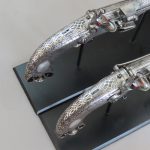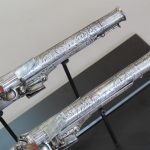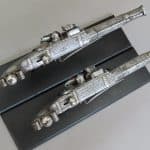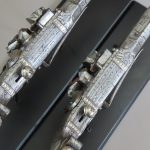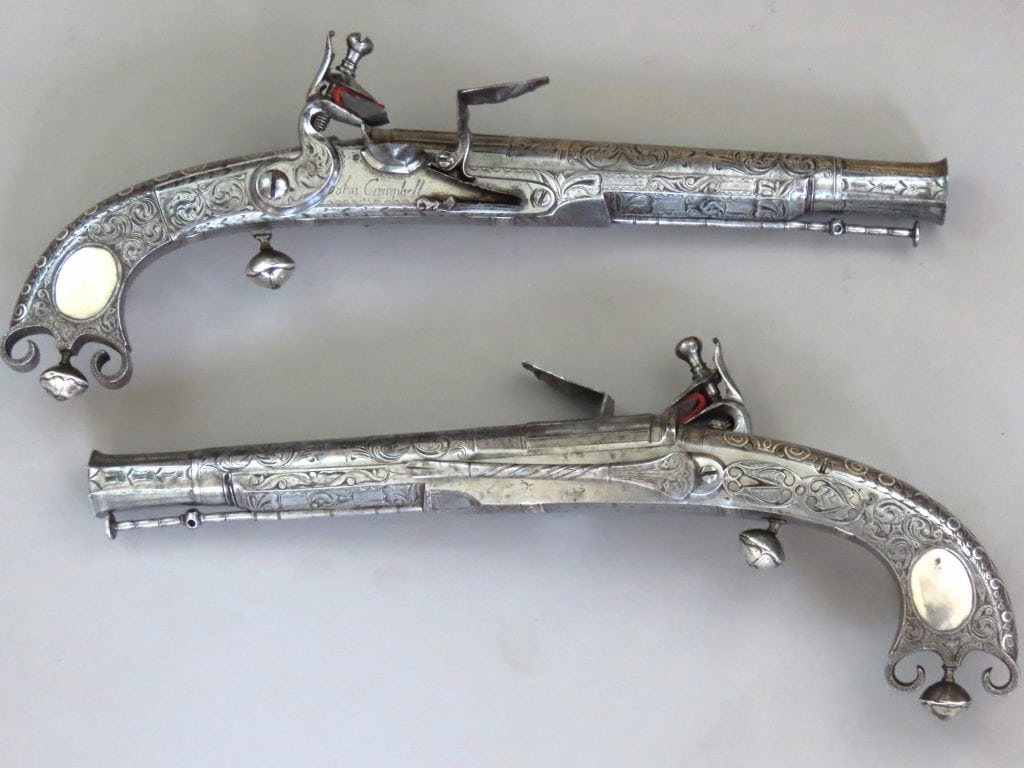
A Fine Pair of Scottish Scroll Butt Pistols by John Campbell (II) of Doune dating to 1755 to 1765
To enquire about this itemplease click here
Price: £28,500
Ref: AA.076.23
Item Description
A pair of 22 bore Scottish Scroll Butt (Rams Horn) pistols by John Campbell (II) of Doune dating to the third quarter of the 18th century. These pistols are typical of the high standard of workmanship of the Doune pistol makers. Although the failure of the 1745 Jacobite Rebellion, and the subsequent prohibition of arms in the Scottish Highlands, reduced the traditional market for Doune pistols, another market opened up with the expanding Scottish military in the middle to third quarter of the 18th century. As evidenced by many surviving portraits of the time, Doune made Scroll Butt pistols were popular with officers in Scottish Highland regiments serving in the Seven Years War (1756 to 1763) in Europe and in North America where the War in that region became known as the French and Indian War. Almost certainly pistols of this type were carried by British officers in the American Revolutionary War period (1775 to 1783) as evidenced by the Pitcairn pistols in the USA and others known with similar historic associations.
There were three generations of Campbells that manufactured pistols in Doune. John Campbell’s father, Alexander Campbell, and the first John Campbell, who was one of the early founders of the gunmaking trade in Doune in the late 17th century. Whilst generally the overall lengths of pistols became shorter as the 18th century progressed, the execution, style and high standard of engraving on this pair is typical of the high standards of Doune
Doune was one of a number of Scottish market towns with established arms making businesses located on the borderland between the “Highland” and “Lowland” regions of Scotland. They supplied weapons mainly to the Highland Clans during the 17th and early 18th centuries. Market days were a busy time as Highland drovers poured into these towns to sell their cattle, the staple of the Highland economy, to Lowland buyers, and to purchase weapons and supplies. Doune developed a quality of workmanship which set it aside from many of the other Scottish gunmaking centres from the late 17th century onwards. A number of family names established gunmaking businesses there such as the Caddell family line, Christie, Murdoch, Michie and of course Campbell. High quality pistols like these were expensive and afforded only by the flamboyant Highland elite.
The all-steel construction is typical of a Doune pistol. The “Doune style” of decoration is particularly pertinent in the barrel decoration, the scrolls on the cocks and lock plates plus the foliage on the fore ends and undersides of the pistols.
These features place the date of manufacture of our pistols to the early period of the working life of John Campbell (II). He was born around 1736, and in line with the norms of the time, would have been making pistols in his own right after completing his apprenticeship most likely in his later teenage years.
The prohibition of weapons in the Highlands after the failure of the ’45 was rigidly enforced and reduced demand for pistols from the Highland Clans which affected the Doune pistol makers. A lifeline had been provided by demand from the officer class for high quality pistols which lasted until the end of the third quarter of the 18th century. It can probably be safely assumed that these pistols were made for a Highland officer.
The Doune makers had also benefitted from military contracts for pistols of a munitions grade for enlisted men in the Highland regiments. But this was only a temporary respite in that military contracts by circa 1765 for munitions grade “Highland” military pistols was shifting to English centres of production.
A continuous erosion of trade eventually led to the cessation of traditional gunmaking in Doune on any scale by around 1780. Many of the traditional gunmakers trained in Doune moved elsewhere. John Campbell remained in Doune until he died 1807.
The locks of these pistols are of typical “Highland” form, sometimes called “Doune locks”, made with a horizontal sear extending through each lock plate which holds the cocks in the half cock position, and a vertical sear is present extending from the top of each trigger plate through small oblong apertures in the centre of the upper surface of each butt. The lock plates are each signed “John Campbell”. The spines of the butts are inlaid with silver Celtic scrolls and engraved with foliage, chevrons and waves. The fore ends are engraved with scrolls, acanthus leaves and linear designs on four planes. The pistols are mounted with silver triggers and prickers, iron ramrod tubes and ramrods. Each side of each stock is decorated with a vacant silver escutcheon.
Underneath the main body of each pistol the space is decorated with three silver bands and detailed linear engraving of scrolls and chevrons. The belt hooks are of fully developed Doune form with a double roundel pierced and decorated with Celtic designs. The four stage 22 bore tapering barrels are 7 and 1/8 inches (18 cm) long with fluted sections near each breach, a grooved back sight cut into each ramp and flared muzzles of octagonal section engraved with flowing scrolls. The middle sections of the barrels are rounded and boldly engraved with foliage on top.





